Congrats on deciding your classroom is ready for a classroom sound wall! Knowing how to set one up can be overwhelming and frustrating. Through this blog series, you will have not only examples of different sound walls in classrooms, but the background knowledge you need to make your sound wall an effective tool for you and your students. If you are still deciding on making the jump to having a sound wall check out this post.
Setting Up Consonant Sound Walls
Today we are focusing even more on consonants and how to organize them on a sound wall. If you are looking for considerations for setting up a sound wall and other consonant information check out Part One of this blog series. Consonants allow for more variations based on how they can be organized and how you are going to use them with your students. A key way consonants are organized is by consonant types. Let’s explore those…
Consonant Types
There are 6 different consonant types. They are categorized by how they stop, block and/or restrict air to make the sounds. Each type has a couple sounds with a sound being made near the front of the mouth, middle and back of the mouth.
-
Stops
These consonant sounds are made by completely blocking air and then releasing it. We have 6 sounds made this way. B & P sounds stops air at the lips and then let it go. D & T sounds stops air with the tip of tongue right behind the back of the top teeth before letting the air go. G & K sounds stops air with the back of the tongue and roof of the mouth before letting the air go.
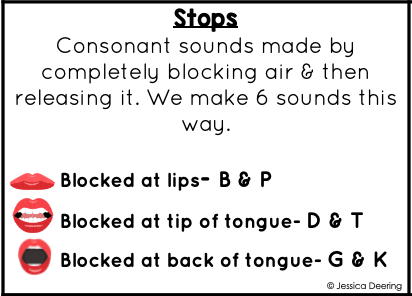
-
Nasals
These consonant sounds are made by blocking the air in our mouth and letting it out our nose. There are three sounds that work this way. It can be hard to believe so trying plugging your noses and see how these sounds change. Students will get a kick out of that. M sound blocks air at the lips. N sound blocks air with the tip of the tongue. NG sound blocks air with the back of the tongue.
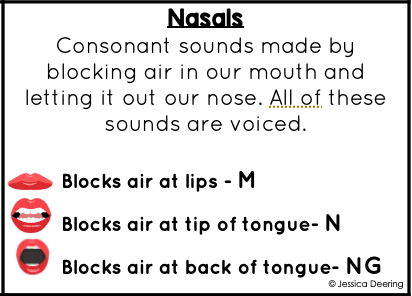
-
Fricatives
These consonant sounds are made by squeezing air through a small gap as it leaves the mouth. There are 8 consonant sounds that are fricatives. F and V sounds squeeze air at the lips. TH (both voiced and unvoiced) squeeze air between the tip of the tongue and top teeth. Z and S sounds also squeeze air between the tip of the tongue and top teeth but do it with the teeth almost closed. ZH and SH sounds squeeze air between middle of tongue and the roof of the mouth before squeezing it through the teeth.
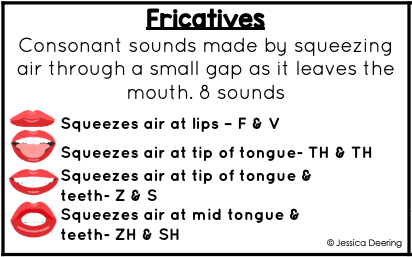
-
Affricatives
This type of consonant sound is a combination of stops and fricatives. These sounds first stop air like a stop sound does. Then when they release the air they squeeze it through a small opening. There are only 2 sounds- J & CH. Both of these sounds made by the middle of the tongue and roof of the mouth stopping the air and then squeezing it through the teeth.
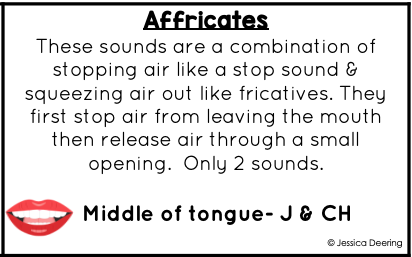
-
Glides
This consonant sound type is only two sounds. Air isn’t stopped but it is somewhat restricted so the air glides through. W and Y sounds are made this way. The W sound has the air restricted by the lips. Y sound restricts air at the top of the mouth.

-
Liquids
There are only two sounds of this type. Air is allowed to escape but is redirected around the tongue as the tongue curls upwards. L sound has the tongue curl up behind the top teeth. R sound has the tongue curl up at the back of the throat.
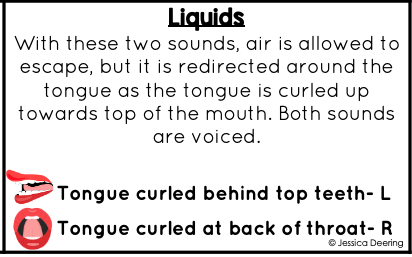
How to Organize by Types
Now that you know the six consonant types here is how it can help you set up a sound wall. Here are two different examples of how to use this knowledge but organize it differently.
This first sound wall has all the consonant types in their own group. The types are separated out from the other types. Within each consonant type, the sounds are organized by where in our mouths we make those sounds. All the sounds on the left of each type are the ones we make near the front of our mouths. The ones on the right are the ones made near the middle (like for Affricatives) or back of the mouth like with the (Stops).
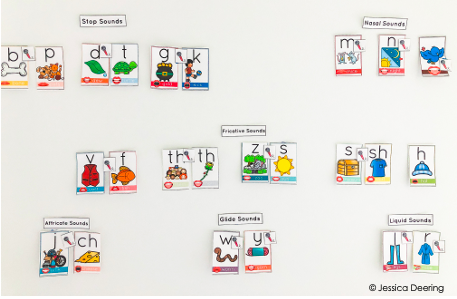
This second one has each consonant type in its own row. The different types are a little more integrated as all the sounds we make near the front of our mouths are in a column together. As are all the sounds made near the middle and the back of our mouths.
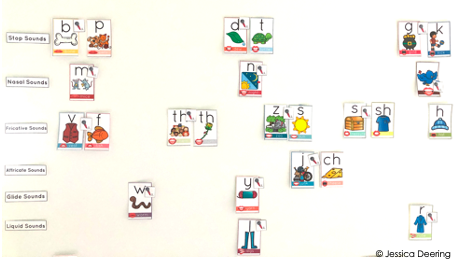
Notice that each of these sound walls also uses the voiced and unvoiced partners talked about in the Part one blog post. All the voiced sounds have a microphone with them to help give a visual to knowing that knowledge.
Looking for More Sound Wall Set Up Help?
I hope learning about these consonant types and how we make them helps you think about consonants. If you are still needing more information about setting up a sound wall or want these consonant types in a PDF click on the photo below to get your own guide.

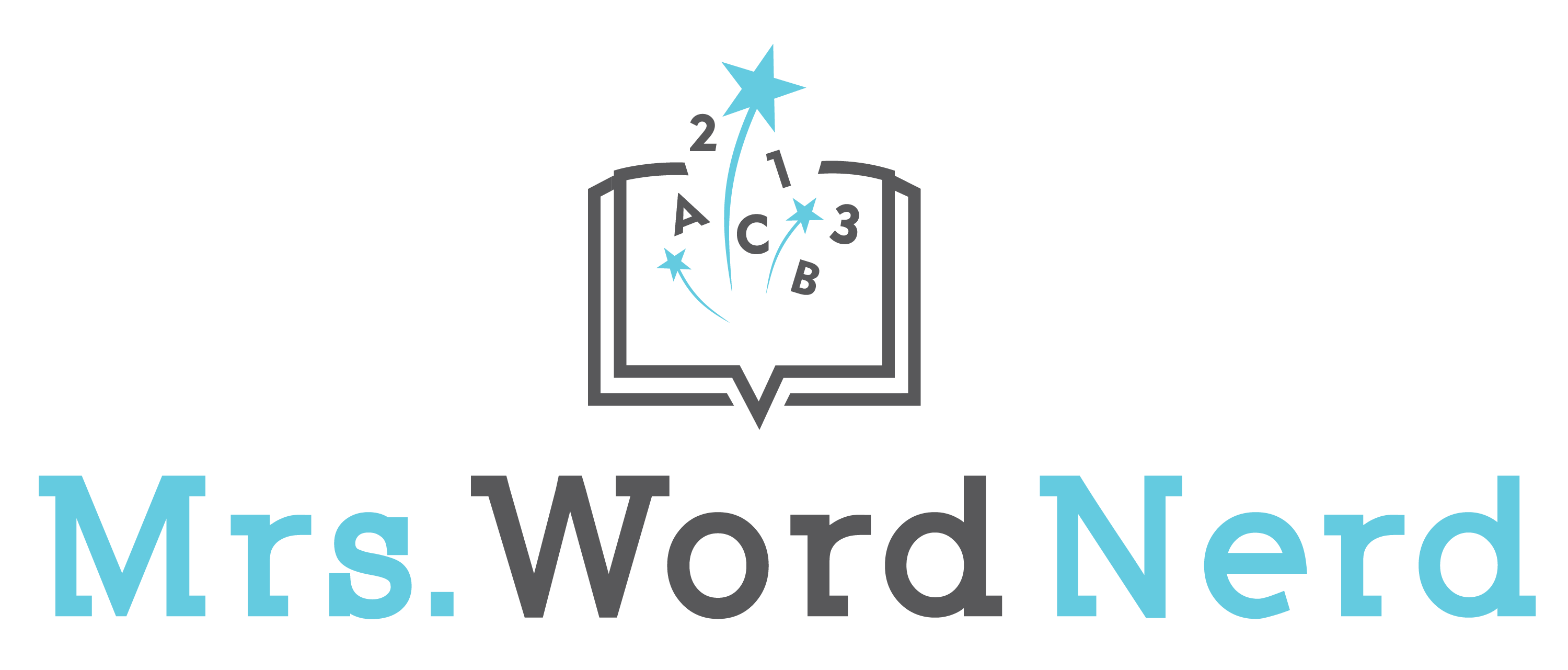

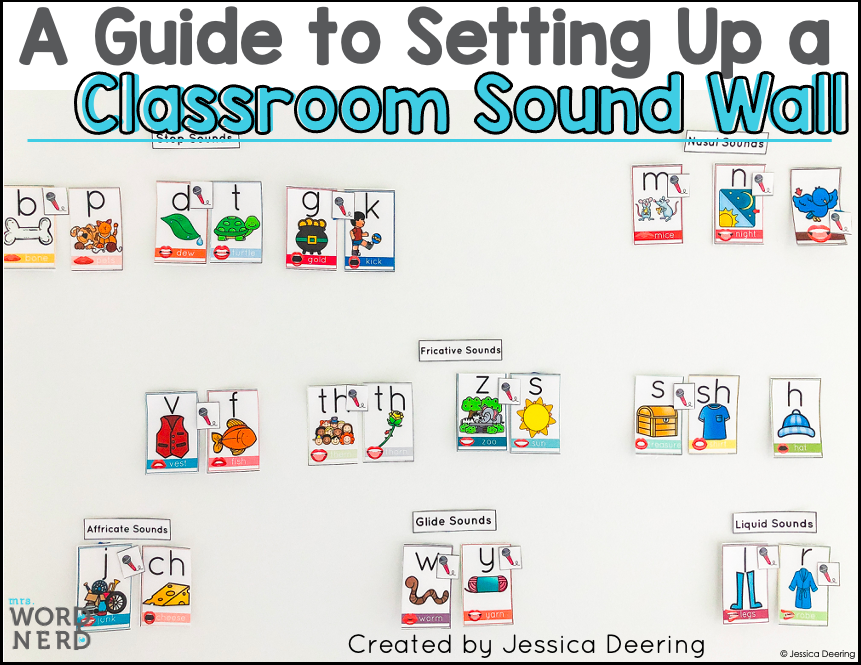



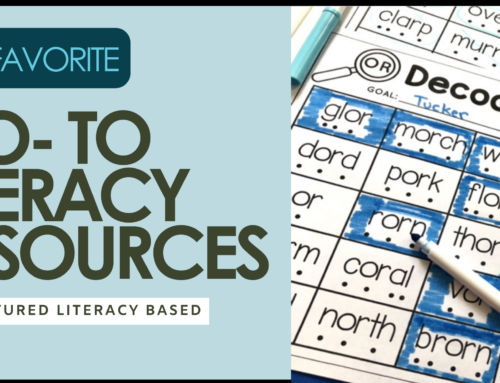
Leave A Comment